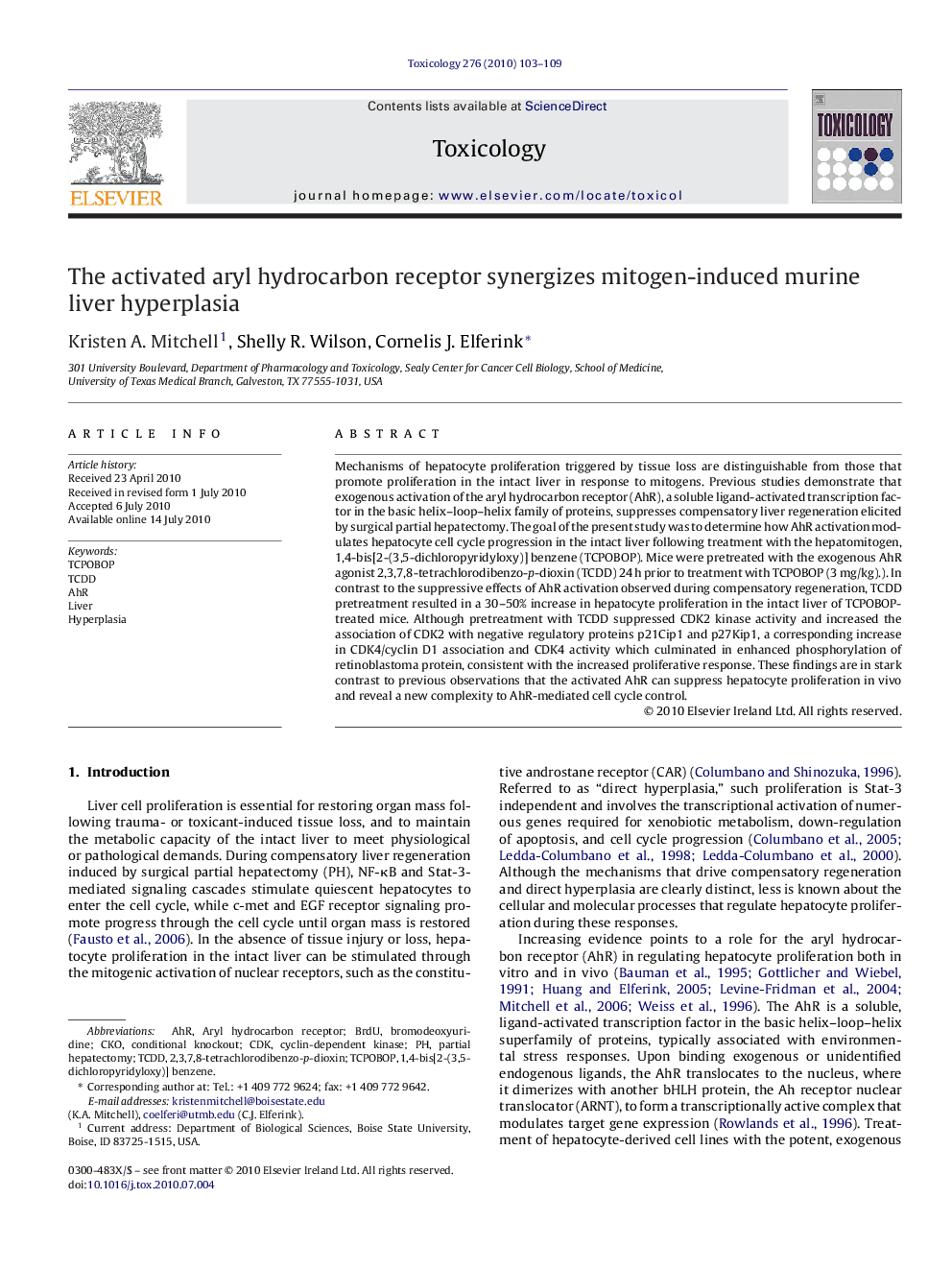| کد مقاله | کد نشریه | سال انتشار | مقاله انگلیسی | نسخه تمام متن |
|---|---|---|---|---|
| 2596336 | 1132522 | 2010 | 7 صفحه PDF | دانلود رایگان |
عنوان انگلیسی مقاله ISI
The activated aryl hydrocarbon receptor synergizes mitogen-induced murine liver hyperplasia
دانلود مقاله + سفارش ترجمه
دانلود مقاله ISI انگلیسی
رایگان برای ایرانیان
کلمات کلیدی
CDKAHRTCDDcKOTCPOBOP2,3,7,8-Tetrachlorodibenzo-p-dioxin - 2،3،7،8-تترا کلریدیبنزوپتوفان دیوکسینBrdU - بروموداکسی اوریدینbromodeoxyuridine - برومودسوویریدینconditional knockout - شکستن شرطPartial hepatectomy - هپاتکتومی جزئیhyperplasia - هیپرپلازی، بیش رویش، هایپرجنزیLiver - کبدcyclin-dependent kinase - کییناز وابسته به سیکلینaryl hydrocarbon receptor - گیرنده آرویل هیدروکربن
موضوعات مرتبط
علوم زیستی و بیوفناوری
علوم محیط زیست
بهداشت، سم شناسی و جهش زایی
پیش نمایش صفحه اول مقاله

چکیده انگلیسی
Mechanisms of hepatocyte proliferation triggered by tissue loss are distinguishable from those that promote proliferation in the intact liver in response to mitogens. Previous studies demonstrate that exogenous activation of the aryl hydrocarbon receptor (AhR), a soluble ligand-activated transcription factor in the basic helix-loop-helix family of proteins, suppresses compensatory liver regeneration elicited by surgical partial hepatectomy. The goal of the present study was to determine how AhR activation modulates hepatocyte cell cycle progression in the intact liver following treatment with the hepatomitogen, 1,4-bis[2-(3,5-dichloropyridyloxy)] benzene (TCPOBOP). Mice were pretreated with the exogenous AhR agonist 2,3,7,8-tetrachlorodibenzo-p-dioxin (TCDD) 24Â h prior to treatment with TCPOBOP (3Â mg/kg).). In contrast to the suppressive effects of AhR activation observed during compensatory regeneration, TCDD pretreatment resulted in a 30-50% increase in hepatocyte proliferation in the intact liver of TCPOBOP-treated mice. Although pretreatment with TCDD suppressed CDK2 kinase activity and increased the association of CDK2 with negative regulatory proteins p21Cip1 and p27Kip1, a corresponding increase in CDK4/cyclin D1 association and CDK4 activity which culminated in enhanced phosphorylation of retinoblastoma protein, consistent with the increased proliferative response. These findings are in stark contrast to previous observations that the activated AhR can suppress hepatocyte proliferation in vivo and reveal a new complexity to AhR-mediated cell cycle control.
ناشر
Database: Elsevier - ScienceDirect (ساینس دایرکت)
Journal: Toxicology - Volume 276, Issue 2, 9 October 2010, Pages 103-109
Journal: Toxicology - Volume 276, Issue 2, 9 October 2010, Pages 103-109
نویسندگان
Kristen A. Mitchell, Shelly R. Wilson, Cornelis J. Elferink,